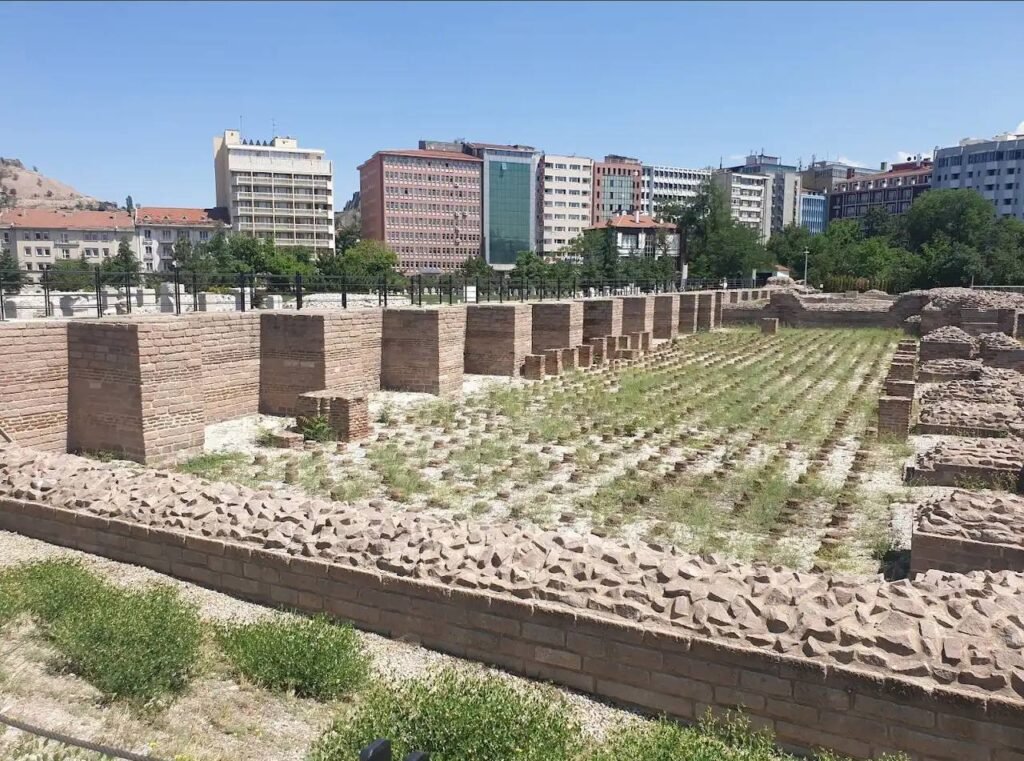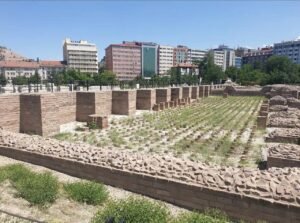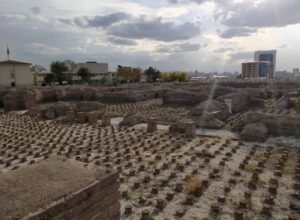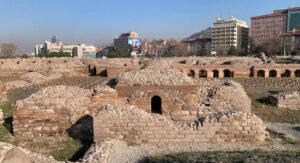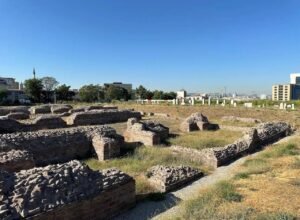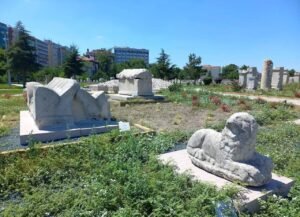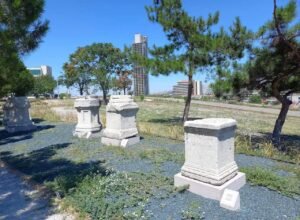Description
Discover the Roman Baths of Ankara: A Hidden Gem of Turkey’s Capital
When people think of ancient Roman ruins, their minds often wander to Italy, Spain, or even North Africa. However, Turkey — a country famed for its blending of civilizations — also boasts remarkable Roman heritage. One of the finest examples lies in Ankara, Turkey’s vibrant capital: the Roman Baths of Ankara.
Tucked away amidst the bustling modern city, the Roman Baths are a timeless reminder of Ankara's ancient roots. They offer visitors a unique glimpse into Roman daily life and the grandeur of past civilizations.
A Journey Back to the 3rd Century
The Roman Baths of Ankara were constructed during the reign of Emperor Caracalla (212–217 AD), a period when the Roman Empire was at its height. Built in honor of Asclepius, the god of medicine, the baths were intended not only for hygiene but also for health, relaxation, and social interaction.
Ankara, known as Ancyra in Roman times, was a key city in the Roman province of Galatia. Its strategic position made it a hub for trade and governance. In such a prominent city, magnificent public buildings like baths were essential — both as a practical facility and a symbol of Roman civilization.
What to Expect When Visiting
Today, the Roman Baths lie in the Altındağ district, a short distance from Ulus Square, one of Ankara’s oldest neighborhoods. Upon arrival, visitors are greeted by expansive ruins sprawling over an open area of around 65,000 square meters.
Although time has worn down much of the original structures, the layout of the baths remains clear. You can easily distinguish the classic sections of a Roman bathhouse:
- Frigidarium (cold room)
- Tepidarium (warm room)
- Caldarium (hot room)
These different areas reflect the elaborate bathing rituals of the Romans, who would progress through rooms of varying temperatures to cleanse, relax, and socialize.
Massive stone walls, intricate brickwork, and remnants of underground heating systems (hypocausts) offer powerful clues about the architectural ingenuity of the Romans. Walking through the site, you can almost imagine the baths bustling with citizens — politicians discussing state matters, merchants closing deals, and families enjoying a communal day out.
Outdoor Exhibition
The Roman Baths site also doubles as an open-air museum. Scattered among the ruins are numerous artifacts unearthed during excavations: sarcophagi, inscriptions, stone sculptures, and column capitals.
The artifacts are neatly arranged along pathways, allowing visitors to explore at their own pace. Clear signage (both in Turkish and English) provides historical context, making the visit both educational and immersive.
The vast green space around the baths, dotted with trees and benches, creates a tranquil atmosphere — perfect for those who want to absorb history away from the crowds.
Archaeological Discoveries and Preservation
The Roman Baths were first discovered during construction work in 1937. Archaeological excavations soon followed under the guidance of Turkish scholars. They revealed that beneath layers of earth lay a remarkably well-preserved example of a Roman thermal complex.
Since then, efforts have been made to protect the site, although the challenge of maintaining open-air ruins in an urban environment remains significant. Nevertheless, the baths have withstood the test of time and continue to offer visitors a rare connection to Ankara’s ancient past.
In recent years, new preservation initiatives have been introduced, including better signage, guided tours, and occasional cultural events hosted near the ruins. These efforts aim to integrate the Roman Baths more fully into Ankara's vibrant tourism scene.
Practical Information for Visitors
- Location: Çankırı Caddesi, Ulus, Altındağ, Ankara, Turkey
- Opening Hours: Typically from 09:00 to 19:00 in summer, and until 17:00 in winter. It is recommended to check local information as hours may vary.
- Entrance Fee: Very affordable, with discounts available for students, seniors, and museum card holders.
- Accessibility: The pathways are relatively flat, but some uneven surfaces mean that full accessibility for wheelchair users can be limited in certain areas.
Tip: Combine your visit with nearby historical attractions such as the Museum of Anatolian Civilizations, Ankara Castle, and the Augustus Temple to make the most of your day in old Ankara.
Why You Should Visit
While Ankara is often overshadowed by Istanbul or Cappadocia on typical tourist itineraries, it has a distinct charm. The Roman Baths offer a fascinating window into layers of history often overlooked by visitors.
For history enthusiasts, architecture buffs, or those simply seeking a peaceful break from the modern city, the Roman Baths are an essential stop. They not only showcase the might and sophistication of Roman engineering but also highlight Ankara’s importance in the broader tapestry of human civilization.
Unlike some of the more crowded tourist sites in Turkey, the Roman Baths provide an intimate experience. Here, you can wander at your leisure, touch the stones worn by centuries of use, and imagine yourself as part of a world long gone.
In short, a visit to the Roman Baths of Ankara is more than just sightseeing — it’s a journey across millennia, a tribute to the endurance of culture, and a testament to the layers of history that continue to shape modern Turkey.
Location
-
Hacı Bayram, Çankırı Cd. No:43, 06050 Altındağ/Ankara
